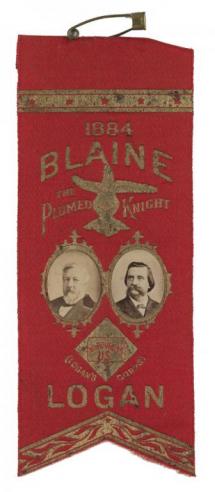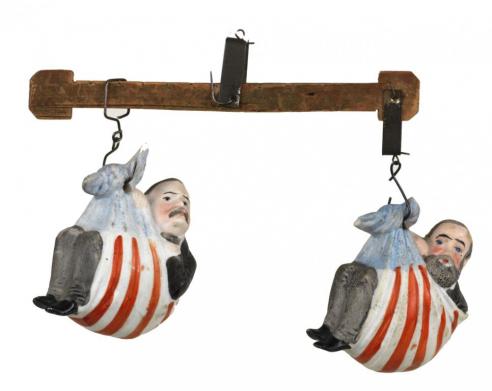Elections from 1876 to 1920
This section contains information and memorabilia on the elections from 1876 to 1920. Scroll down the page to learn more about specific election years.
Election of 1876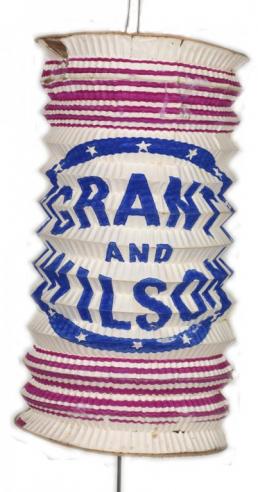
Although President Ulysses S. Grant wanted to run for a third term, both the Republican and Democratic parties desired reform candidates with reputations for integrity and honesty. Most of the Liberal Republicans of the 1872 campaign rejoined the main Republican Party to select Rutherford Hayes as its candidate. He was a Civil War veteran and Ohio governor who promised civil service reform. The Democratic Party nominated New York governor Samuel Tilden, who had gained a reputation for honesty by exposing and prosecuting the corrupt Boss Tweed ring of New York City. Even though the candidates had similar reform platforms, the campaign rhetoric was harsh. The Democrats emphasized the scandals of the previous administration with the slogan “throw the rascals out.” Using a tactic called “waving the bloody shirt,” Republicans continued to assail the Democrats as the rebellious party in the Civil War. Once again, former U.S. soldiers paraded for the Republican candidate. Initial election returns indicated that Tilden had won with 184 electoral votes and 51 percent of the popular vote against Hayes’s 165 electoral votes and 47.9 percent of the popular votes. However, the remaining 20 electoral votes from South Carolina, Florida, Louisiana, and one 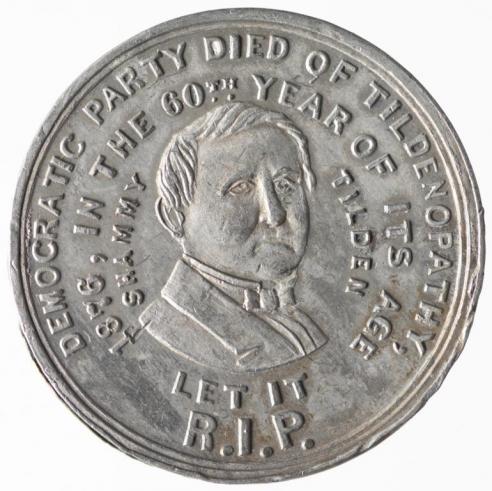 in Oregon were disputed because there had been considerable fraud and voter intimidation in these states. Meanwhile, both parties claimed victory. The Constitution offered no guidelines to resolve the problem. After much debate, Congress created a bipartisan Electoral Commission to settle the issue. To be fair, the commission was comprised of seven Republicans, seven Democrats, and one Independent. When the results of each of the disputed state were reviewed, however, the Independent voted with the Republicans to give Hayes all 20 of the electoral votes. His total of 185 votes gave him the election. Virginia cast its 11 electoral votes for Samuel Tilden.
in Oregon were disputed because there had been considerable fraud and voter intimidation in these states. Meanwhile, both parties claimed victory. The Constitution offered no guidelines to resolve the problem. After much debate, Congress created a bipartisan Electoral Commission to settle the issue. To be fair, the commission was comprised of seven Republicans, seven Democrats, and one Independent. When the results of each of the disputed state were reviewed, however, the Independent voted with the Republicans to give Hayes all 20 of the electoral votes. His total of 185 votes gave him the election. Virginia cast its 11 electoral votes for Samuel Tilden.
Election of 1880
The Republican Party was split at its nominating convention between the “Stalwarts,” a faction favoring a third term for Ulysses S. Grant, and the “Half-Breeds,” who backed Senator James G. Blaine of Maine. The patronage and traditional politics favored by the Stalwarts contrasted with the agenda of the Half-Breeds, who demanded further civil service reform. After 36 ballots, a compromise candidate, Ohio senator-elect James A. Garfield, was nominated. Because Garfield was a Half-Breed, the ticket was balanced by selecting a Stalwart, Chester A. Arthur, for his running mate. Arthur had recently been removed as collector for the port of New York City under charges of corruption. The Democratic Party chose another Civil War hero, Winfield Scott Hancock, as its presidential candidate. The Democratic platform also called for civil service reform. The major difference 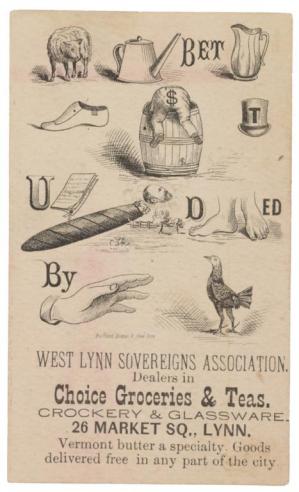 between the parties was where they stood on tariff regulations. Republicans favored a high tariff to protect American industries, while Democrats dismissed the issue as a local problem. The election centered on personal attacks in the absence of other significant differences. During the campaign, Hancock, who had been called “The Superb” for his conduct at the battle of Gettysburg, was attacked for lack of political experience and knowledge. Garfield initiated the “front porch campaign” receiving delegations and visitors at his home for speeches. Opponents attacked Garfield for corruption early in his political career.
between the parties was where they stood on tariff regulations. Republicans favored a high tariff to protect American industries, while Democrats dismissed the issue as a local problem. The election centered on personal attacks in the absence of other significant differences. During the campaign, Hancock, who had been called “The Superb” for his conduct at the battle of Gettysburg, was attacked for lack of political experience and knowledge. Garfield initiated the “front porch campaign” receiving delegations and visitors at his home for speeches. Opponents attacked Garfield for corruption early in his political career.
Almost 78 percent of eligible voters cast their ballot in 1880. The election was close with Garfield receiving the electoral vote by 214 to 143, despite getting only 48 percent of the popular vote. After only a few months in office, James Garfield was assassinated, and Chester Arthur became president. Virginia cast its 11 electoral votes for Winfield Scott Hancock.
Election of 1884
The Republican Party, led by the “Half-Breed” faction, nominated its leader, the popular, charismatic secretary of state, James G. Blaine. A handsome, charming, veteran politician, Blaine was also an eloquent speaker. He had enemies, however, including members of the Republican Party Stalwart faction. In addition, although he denied the allegations, Blaine had previously been suspected of engaging in illegal financial dealings with the railroads. As a result, some Republican Party reformers, called the “Mugwumps,” bolted the party. They chose to support the Democratic nominee, Grover Cleveland, a reform candidate with a reputation for honesty. The Democrats saw an opportunity to return to the White House after twenty-four years of Republican administrations.
Early in the campaign, a series of incriminating letters written by Blaine were released by a railroad bookkeeper. One of the letters ended with the postscript “burn this letter.” Democrats chanted: 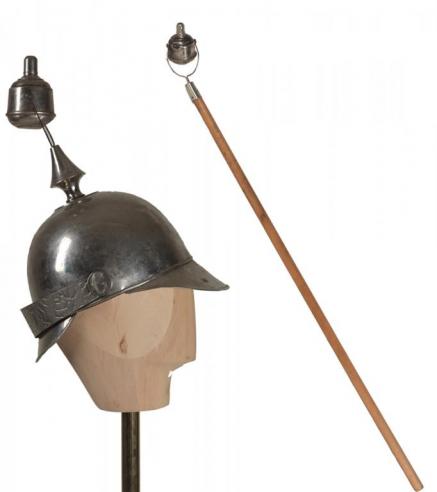 “Blaine, Blaine. Continental liar from the state of Maine. Burn this letter.” Grover Cleveland’s reputation also came under attack when he was accused of being a draft-dodger during the Civil War who hired a substitute to serve in his place. Republicans pointed out that every president since the war had been a veteran. Even more damaging was the allegation that Cleveland had fathered an illegitimate child.
“Blaine, Blaine. Continental liar from the state of Maine. Burn this letter.” Grover Cleveland’s reputation also came under attack when he was accused of being a draft-dodger during the Civil War who hired a substitute to serve in his place. Republicans pointed out that every president since the war had been a veteran. Even more damaging was the allegation that Cleveland had fathered an illegitimate child.
The election was extremely close. Grover Cleveland only won the popular vote by 23,000 out of the approximately 10 million votes cast nationally. The electoral vote was 219 to 182. New York State went to Cleveland by only 1,149 votes. Had Blaine won New York’s electoral votes, he would have won the election. Virginia cast its 12 electoral votes for Grover Cleveland.
Election of 1888
President Grover Cleveland was easily nominated for reelection in 1888, and in his acceptance speech, he made the tariff the central issue of his campaign. Although not all Democrats agreed, Cleveland advocated a low tariff. When James G. Blaine refused the Republican nomination, the party chose Benjamin Harrison, another Civil War general and the 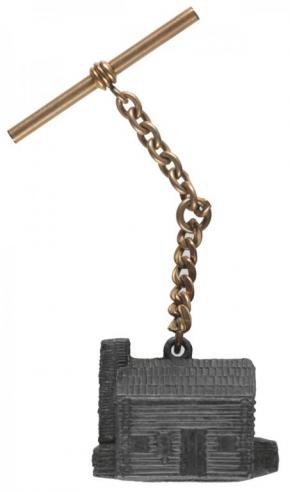 grandson of William Henry Harrison, the country’s ninth President. The Republicans were united in favor of a high tariff to protect American industry from foreign competition. Cleveland did little campaigning on his own behalf. Instead, vice presidential candidate Alan Thurman was active on the
grandson of William Henry Harrison, the country’s ninth President. The Republicans were united in favor of a high tariff to protect American industry from foreign competition. Cleveland did little campaigning on his own behalf. Instead, vice presidential candidate Alan Thurman was active on the  campaign trail and provided the Democrats with a symbol for the 1888 election. Harrison preferred the “front porch” campaign and received visitors at his home in Indianapolis.
campaign trail and provided the Democrats with a symbol for the 1888 election. Harrison preferred the “front porch” campaign and received visitors at his home in Indianapolis.
For the third time (the other two being the 1824 and 1876 elections), the candidate who won the popular vote lost the election. Though Cleveland edged out Harrison with 48.6 percent of the popular vote versus 47.8 percent, Harrison received 233 electoral votes to Cleveland’s 168. Had Cleveland won his home state of New York, he would have been reelected. Virginia cast its 12 electoral votes for Grover Cleveland.
Election of 1892
Although the election of 1892 was a rematch between Republican Benjamin Harrison and Democrat Grover Cleveland, a significant third party made its presence. The Peoples Party, also called the “Populists,” developed because of tough times for western and southern farmers, who suffered from drought, low prices for crops, and high mortgage rates. The new party nominated James Weaver as its candidate. The major parties again debated the tariff issue and protection for industry. Despite a loss of support within his own party, Harrison remained the Republican nominee. Grover Cleveland was again nominated by the 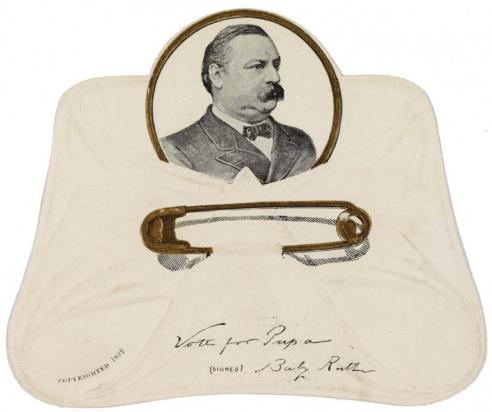 Democrats and campaigned on a platform to lower tariffs. Cleveland also was a proponent of maintaining the gold standard. To balance the ticket, silver advocate Adlai E. Stevenson was chosen as Cleveland’s running mate. Neither party waged a particularly enthusiastic campaign, and diminished campaign finances resulted in fewer parades and campaign items. Grover Cleveland won decisively, becoming the only president to serve two nonconsecutive terms. The electoral vote margin was 277 for Cleveland to 145 for Harrison and 22 for Weaver. Virginia cast its 12 electoral votes for Grover Cleveland.
Democrats and campaigned on a platform to lower tariffs. Cleveland also was a proponent of maintaining the gold standard. To balance the ticket, silver advocate Adlai E. Stevenson was chosen as Cleveland’s running mate. Neither party waged a particularly enthusiastic campaign, and diminished campaign finances resulted in fewer parades and campaign items. Grover Cleveland won decisively, becoming the only president to serve two nonconsecutive terms. The electoral vote margin was 277 for Cleveland to 145 for Harrison and 22 for Weaver. Virginia cast its 12 electoral votes for Grover Cleveland.
Election of 1896
As the election of 1896 began, the country was in an economic crisis with high unemployment because of a prolonged depression. Farmers were suffering with debt and bankruptcy. Differing opinions on the economic and monetary solution to the economic woes, as well as contrasting 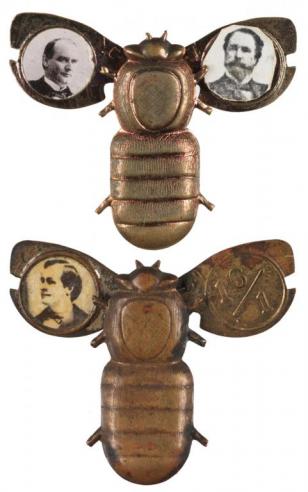 political styles of the candidates, resulted in a dynamic presidential campaign.
political styles of the candidates, resulted in a dynamic presidential campaign.
Democratic Party delegates who proclaimed that the answer to the economic problem was the unlimited coinage of silver at a ratio of 16 ounces of silver to 1 ounce of gold controlled the nominating convention. Led by thirty-six-year-old Nebraska delegate William Jennings Bryan, these Democrats depicted silver as the salvation of the country. Bryan won the party’s nomination after delivering his rousing “cross of gold” speech, in which he concluded with the remarks: “You shall not press down upon the brow of labor this crown of thorns, you shall not crucify mankind upon a cross of gold.” The Populist Party, which had gotten more than a million votes in 1892 on a platform of free coinage of silver, decided to endorse Bryan instead of its own candidate. Not all Democrats agreed with the “silverites” and Populists, however. A small group favored the gold standard and called themselves the National Democratic Party. They nominated John Palmer for president. The fiscally conservative Republican Party, arguing that laborers benefited from high tariff protectionism and a sound, gold-based money supply, nominated William McKinley.
A new style of personal campaigning arose during this election. Though previous candidates, with a few exceptions, thought that it was inappropriate to ask for votes, Bryan’s aggressive and extensive “whistle stop” railroad speaking tour—during which he gave over 600 speeches from the back platform of a railroad car—coupled with McKinley’s use of the “front porch” campaign—where he addressed visitors from the front steps of his home—changed that image. Moreover, the effective use of a campaign manager and fund raiser set a precedent for future elections. Although Bryan’s message appealed to the low-paid worker and the farmer in poorer, rural areas, McKinley was favored in industrialized regions and urban areas. In addition, McKinley was aided by improving economic conditions in the months before the election. Although he won only one more state than Bryan, William McKinley won the states with more electoral votes for a total of 271 to 176 (and 51% of the popular vote). More people voted in 1896 than in any previous election. Virginia cast its 12 electoral votes for William Jennings Bryan.
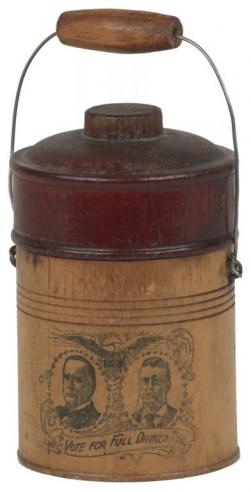 Election of 1900
Election of 1900
The previous four years of the McKinley administration had seen a marked improvement in economic conditions. The passage of the Gold Standard Act in 1900 appeared to have settled the currency issue. In addition, the country had fought and won a brief war with Spain over Cuban independence. As a result, the United States acquired Puerto Rico, Guam, and the Philippines. With a slogan of “Four More Years of a Full Dinner Pail,” the Republican Party re-nominated William McKinley. After McKinley’s previous vice president, Garrett Hobart, died in November 1899, Theodore Roosevelt, former governor of New York and leader of the famed “Rough Riders” in the Spanish-American war, was chosen to replace him. The Democratic Party again selected William Jennings Bryan as its candidate. Despite the country’s improved economic conditions, Bryan continued to campaign vigorously for silver coinage. Enthusiasm for this issue had waned, however, and the Democratic Party added objection to American imperialism as well as trust busting to its platform.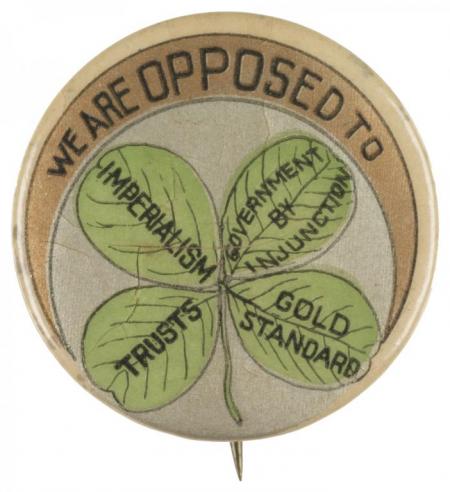
Bryan again waged an energetic speaking tour, yet this time he was outmatched by vice presidential candidate “Teddy” Roosevelt, who traveled even more miles than Bryan on the campaign trail. Meanwhile, McKinley continued to greet delegates and visitors at his home with his “front porch” campaign. William McKinley won the election by an even larger margin than he had in 1896. The electoral vote was 292 to 153. Six months after his inauguration, however, McKinley was assassinated, and Theodore Roosevelt became president. Virginia cast its 12 electoral votes for William Jennings Bryan.
Election of 1904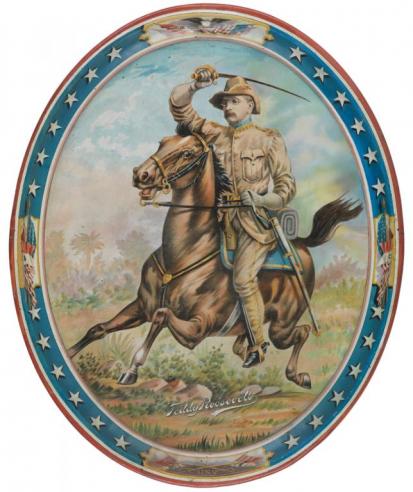
Following the assassination of President William McKinley, Vice President Theodore Roosevelt became the youngest man to occupy the White House. Initially, he promised to continue the policies of President McKinley but soon began to shift to a new, progressive reform agenda that included antitrust investigation and the breakup of powerful corporations. His slogan that business should give every man “a square deal” and his foreign policy to “speak softly but carry a big stick” made him popular with the public. Despite opposition by some old guard party conservatives, this popularity made him an easy choice for the Republican Party nomination. The Democratic Party was split between its conservative eastern wing and the more radical western and southern supporters of William Jennings Bryan. Tired of the silver issues, the conservatives thought their best chance for the election was to get business support against the 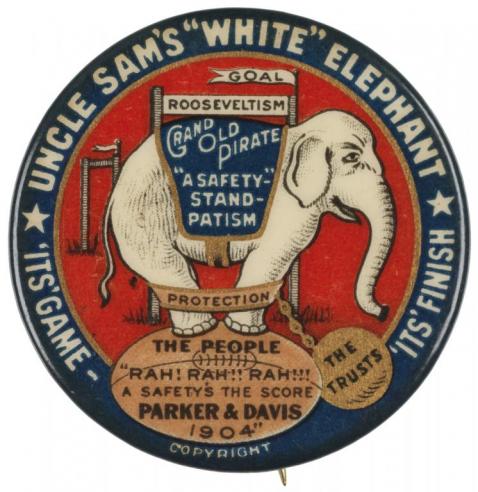 “trust-busting” Roosevelt. Bryan did not wish to run against Roosevelt and the nomination went to a fiscally conservative New York chief justice, Alton B. Parker. Several other parties fielded candidates including the new Socialist Party (Eugene V. Debs), Prohibition Party (Silas Swallow), and the Peoples Party (Thomas Watson).
“trust-busting” Roosevelt. Bryan did not wish to run against Roosevelt and the nomination went to a fiscally conservative New York chief justice, Alton B. Parker. Several other parties fielded candidates including the new Socialist Party (Eugene V. Debs), Prohibition Party (Silas Swallow), and the Peoples Party (Thomas Watson).
The election was a landslide victory for Roosevelt. The electoral vote margin was 332 to 140 (Parker won in thirteen southern states, while Roosevelt swept the other thirty-two states). Virginia cast its 12 electoral votes for Alton Parker.
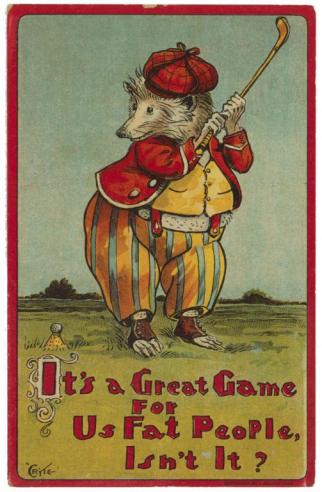 Election of 1908
Election of 1908
Having announced his intention not to seek a third term, President Theodore Roosevelt sought to continue his progressive policies by choosing William Howard Taft as his successor. Although Taft’s ambition was to be a Supreme Court justice, he was persuaded by Roosevelt—as well as Mrs. Taft—to seek the presidency. Although the progressive wing of the Republican Party wanted Roosevelt to run again, Teddy saw to it that Taft was easily nominated on the first ballot at the convention. Taft promised to continue the current policies. After Alton Parker’s overwhelming defeat in the 1904 election, the Democratic Party again turned to William Jennings Bryan. There was no serious opposition at the Denver convention, and Bryan was a first ballot nominee. Several minor parties also presented candidates: the Socialists (Eugene V. Debs), the Prohibition Party (Eugene Chafin), the Populist Party (Thomas Watson), and the Independence Party (Thomas Hisgen).
During the campaign, Bryan again took to the stump, attacking the Republicans on campaign finance issues and portraying them as the party of the wealthy. Taft would have preferred a “front porch” campaign but was persuaded by Roosevelt to attack Bryan  vigorously with his own series of speeches. Roosevelt was also active on the campaign trail promoting his successor. Although there was little difference in the platforms of the two major parties, William Howard Taft won the election with 321 electoral votes to 162. Virginia cast its 12 electoral votes for William Jennings Bryan.
vigorously with his own series of speeches. Roosevelt was also active on the campaign trail promoting his successor. Although there was little difference in the platforms of the two major parties, William Howard Taft won the election with 321 electoral votes to 162. Virginia cast its 12 electoral votes for William Jennings Bryan.
Election of 1912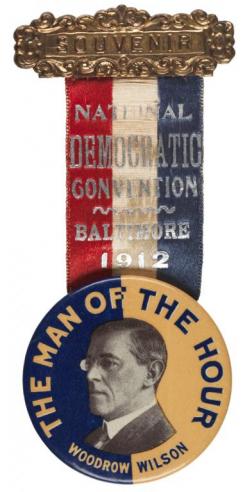
Having hand-picked Taft as his successor, Theodore Roosevelt went on an African safari and tour of Europe. Following his return in 1910, he became dissatisfied with Taft’s shift away from his progressive policies to more conservative views. Thus, Roosevelt decided to enter the 1912 Republican presidential primaries. He won in nine states (278 delegates) to one for Taft (48 delegates) and two for progressive Robert Lafollette (36 delegates). Republican Party conservatives, however, controlled the national convention and chose to ignore the primary results. Taft was nominated on the first ballot. Roosevelt and his followers met soon after to form a new third party, the National Progressive Party (nicknamed the “Bull Moose Party” after Roosevelt declared himself “fit as a bull moose” and ready for the campaign). The party platform called for increased government regulations on big business and women’s suffrage. Because of the Republican Party split, the Democrats realized their opportunity to claim the White House. Speaker of the House Champ Clark was the early favorite, but after 46 ballots, former New Jersey governor and Princeton professor Woodrow Wilson was nominated. The Democratic Party platform (called the “New Freedom”) was also progressive and favored measures to end trusts and restore competition.
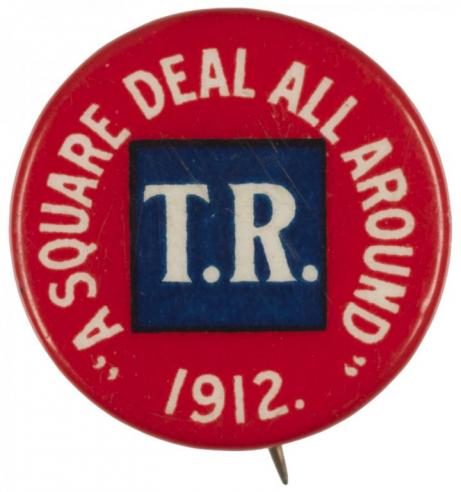 Both Wilson and Roosevelt actively campaigned with “whistle stop” railroad tours while Taft essentially dropped out of the race, giving only a few speeches on his own behalf. Near the end of the campaign, an assassination attempt was made on Roosevelt’s life. Afterwards, all the participants agreed to suspend campaigning while Roosevelt recovered. In the election, Wilson easily won the electoral vote receiving 435 votes to 88 for Roosevelt and 8 for Taft. The popular vote was much closer with Wilson only getting 41 percent. Roosevelt was second and Socialist Eugene V. Debs received 6 percent of the total. Virginia cast its 12 electoral votes for Woodrow Wilson.
Both Wilson and Roosevelt actively campaigned with “whistle stop” railroad tours while Taft essentially dropped out of the race, giving only a few speeches on his own behalf. Near the end of the campaign, an assassination attempt was made on Roosevelt’s life. Afterwards, all the participants agreed to suspend campaigning while Roosevelt recovered. In the election, Wilson easily won the electoral vote receiving 435 votes to 88 for Roosevelt and 8 for Taft. The popular vote was much closer with Wilson only getting 41 percent. Roosevelt was second and Socialist Eugene V. Debs received 6 percent of the total. Virginia cast its 12 electoral votes for Woodrow Wilson.
Election of 1916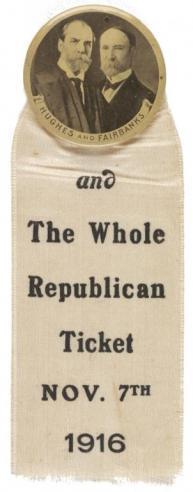
Woodrow Wilson was easily nominated for a second term at the 1916 Democratic Convention. His first term had seen the passage of considerable reform legislation, including child labor laws, a new Federal Trade Commission, and an eight-hour day for railroad workers. Still, the central issue at the convention was America’s possible role in the war in Europe, which had begun two years earlier. The Democrats expressed the desire for the country to remain neutral and adopted the campaign slogan “He kept us out of war.” The main problem for the Republicans was to find a candidate who could unite the regular conservatives and the Bull Moose progressives. Although the progressives still wanted to nominate Theodore Roosevelt, he declined. The nomination instead went to Charles Evans Hughes, who had previously been supported for governor of New York by Roosevelt and chosen for Supreme Court justice by William Howard Taft. Hughes traveled across the country by rail and gave hundreds of speeches. Although most Republicans favored neutrality, a more belligerent Roosevelt, while campaigning for Hughes, vigorously attacked Wilson for being weak in defending America’s interests. As a result, Hughes and the Republicans were accused by the Democrats of wanting to involve America in the war.
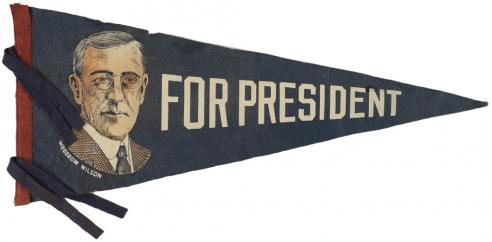 The contest proved to be remarkably close. Hughes led on election night and some newspapers declared him to be the winner. By the following day, however, returns from California gave the election to Woodrow Wilson with 277 electoral votes to 254 for Hughes. Wilson was sworn in as president on March 4, 1917, and America declared war on Germany on April 6. The slogan changed from “He kept us out of war” to “A War to End all Wars.” Virginia cast its 12 electoral votes for Woodrow Wilson.
The contest proved to be remarkably close. Hughes led on election night and some newspapers declared him to be the winner. By the following day, however, returns from California gave the election to Woodrow Wilson with 277 electoral votes to 254 for Hughes. Wilson was sworn in as president on March 4, 1917, and America declared war on Germany on April 6. The slogan changed from “He kept us out of war” to “A War to End all Wars.” Virginia cast its 12 electoral votes for Woodrow Wilson.
Election of 1920
Although he had suffered a stroke in 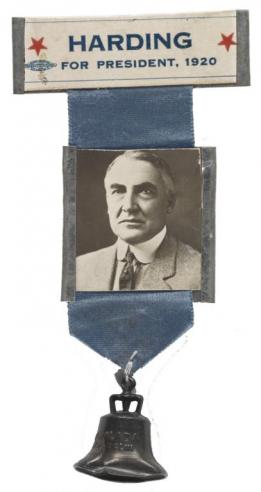 1919, President Woodrow Wilson still entertained the idea of running for president in 1920. The American public, however, had become discontent with the war and the resultant loss of life, increased cost of living, and unemployment. Many wished for the country to return to isolationist policies, and the Senate opposed Wilson’s personal appeal for the country to join a postwar League of Nations. There were no leading contenders for the presidential nomination at the Democratic National Convention. The party chose not to nominate Wilson, and it took 46 ballots before a compromise candidate, Governor James M. Cox of Ohio, was selected. Assistant Secretary of the Navy Franklin D. Roosevelt was picked as Cox’s running mate. The Republicans also lacked a strong potential candidate at their convention, and they, too, settled on compromise candidate, Ohio senator Warren G. Harding, after early ballots failed to produce a clear-cut leader. Senator Calvin Coolidge of Massachusetts was chosen as Harding’s running mate.
1919, President Woodrow Wilson still entertained the idea of running for president in 1920. The American public, however, had become discontent with the war and the resultant loss of life, increased cost of living, and unemployment. Many wished for the country to return to isolationist policies, and the Senate opposed Wilson’s personal appeal for the country to join a postwar League of Nations. There were no leading contenders for the presidential nomination at the Democratic National Convention. The party chose not to nominate Wilson, and it took 46 ballots before a compromise candidate, Governor James M. Cox of Ohio, was selected. Assistant Secretary of the Navy Franklin D. Roosevelt was picked as Cox’s running mate. The Republicans also lacked a strong potential candidate at their convention, and they, too, settled on compromise candidate, Ohio senator Warren G. Harding, after early ballots failed to produce a clear-cut leader. Senator Calvin Coolidge of Massachusetts was chosen as Harding’s running mate.
The major campaign issue was the debate over America’s joining the League of Nations. Cox was clearly in favor the idea; Harding was ambiguous. Following the passage of the 19th Amendment, 1920 marked the first presidential election in which women could vote.
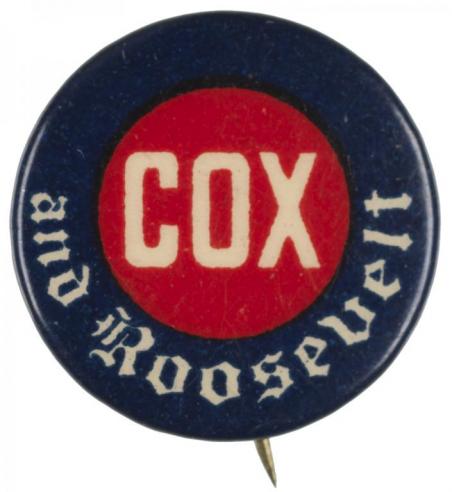 The result of the election was a landslide victory for Harding, who received more than 60 percent of the popular vote and 404 electoral votes to 127 for Cox. The results probably reflected a public desire to return to the “normalcy” of pre–World War I America and dissatisfaction with the Wilson reforms and involvement in international affairs. Despite their first opportunity to vote for president, the turnout of female voters was low. Virginia cast its 12 electoral votes for James Cox.
The result of the election was a landslide victory for Harding, who received more than 60 percent of the popular vote and 404 electoral votes to 127 for Cox. The results probably reflected a public desire to return to the “normalcy” of pre–World War I America and dissatisfaction with the Wilson reforms and involvement in international affairs. Despite their first opportunity to vote for president, the turnout of female voters was low. Virginia cast its 12 electoral votes for James Cox.

